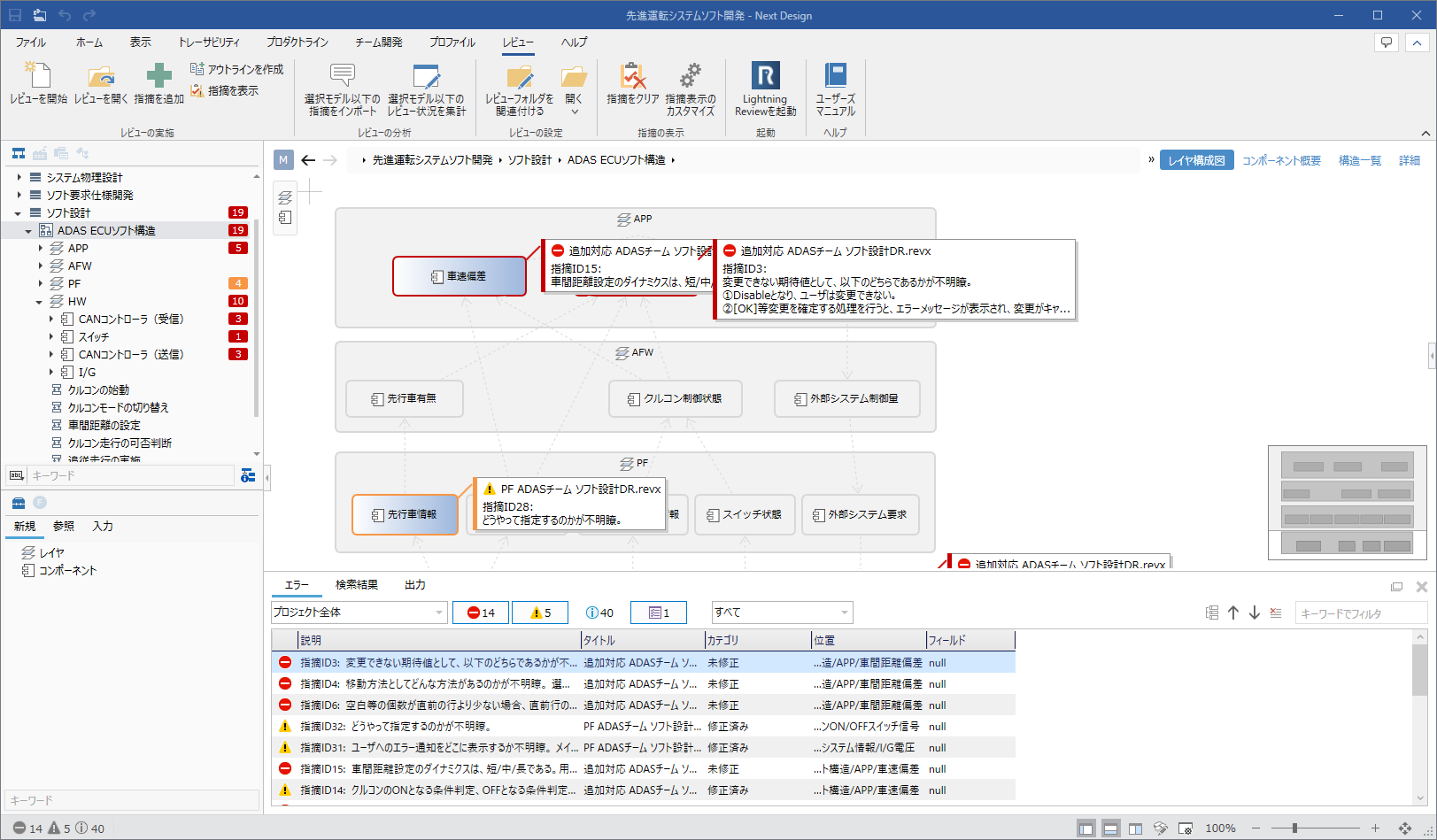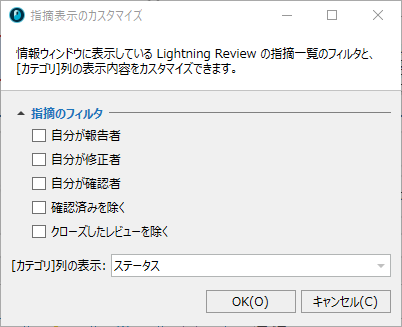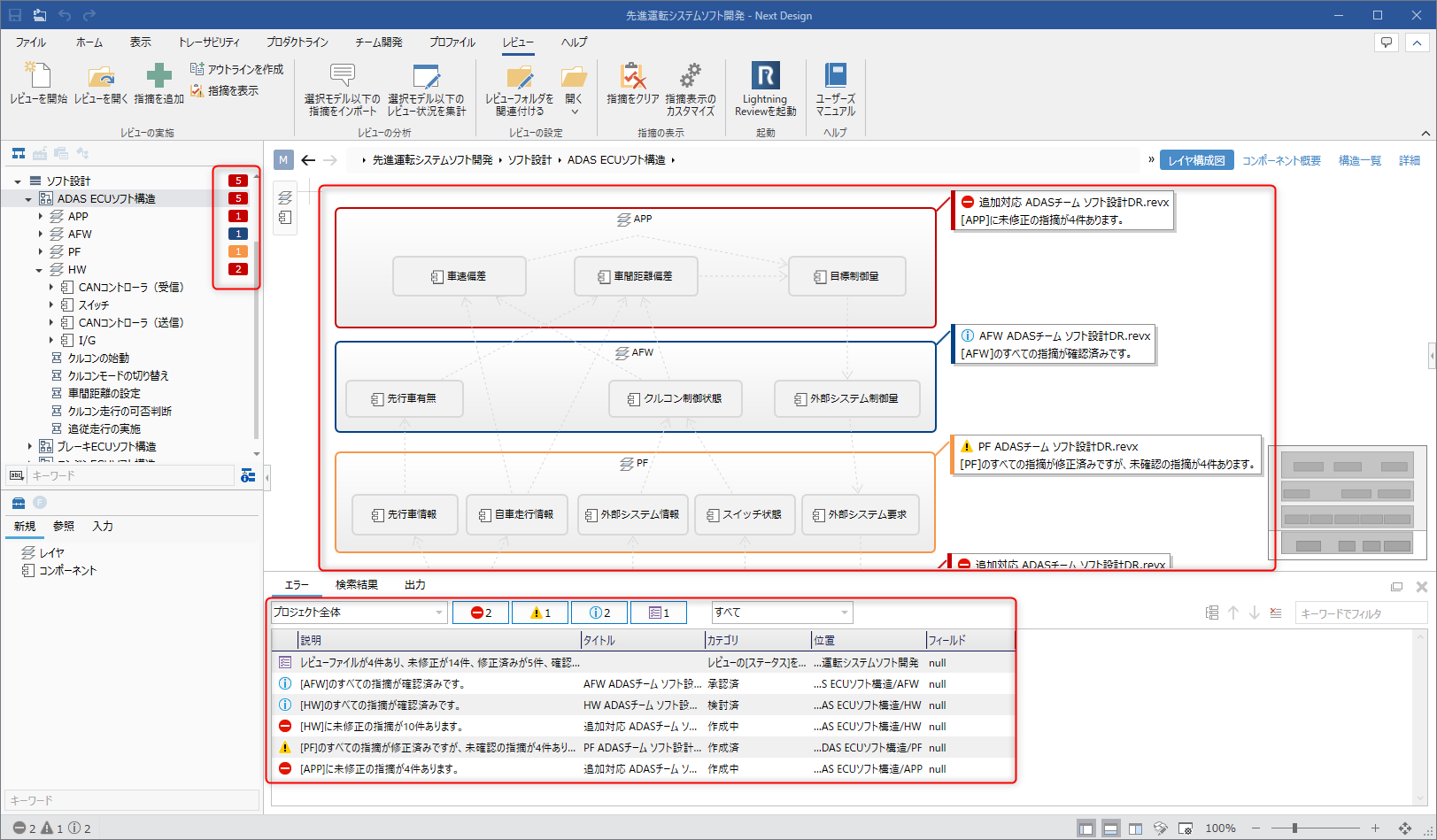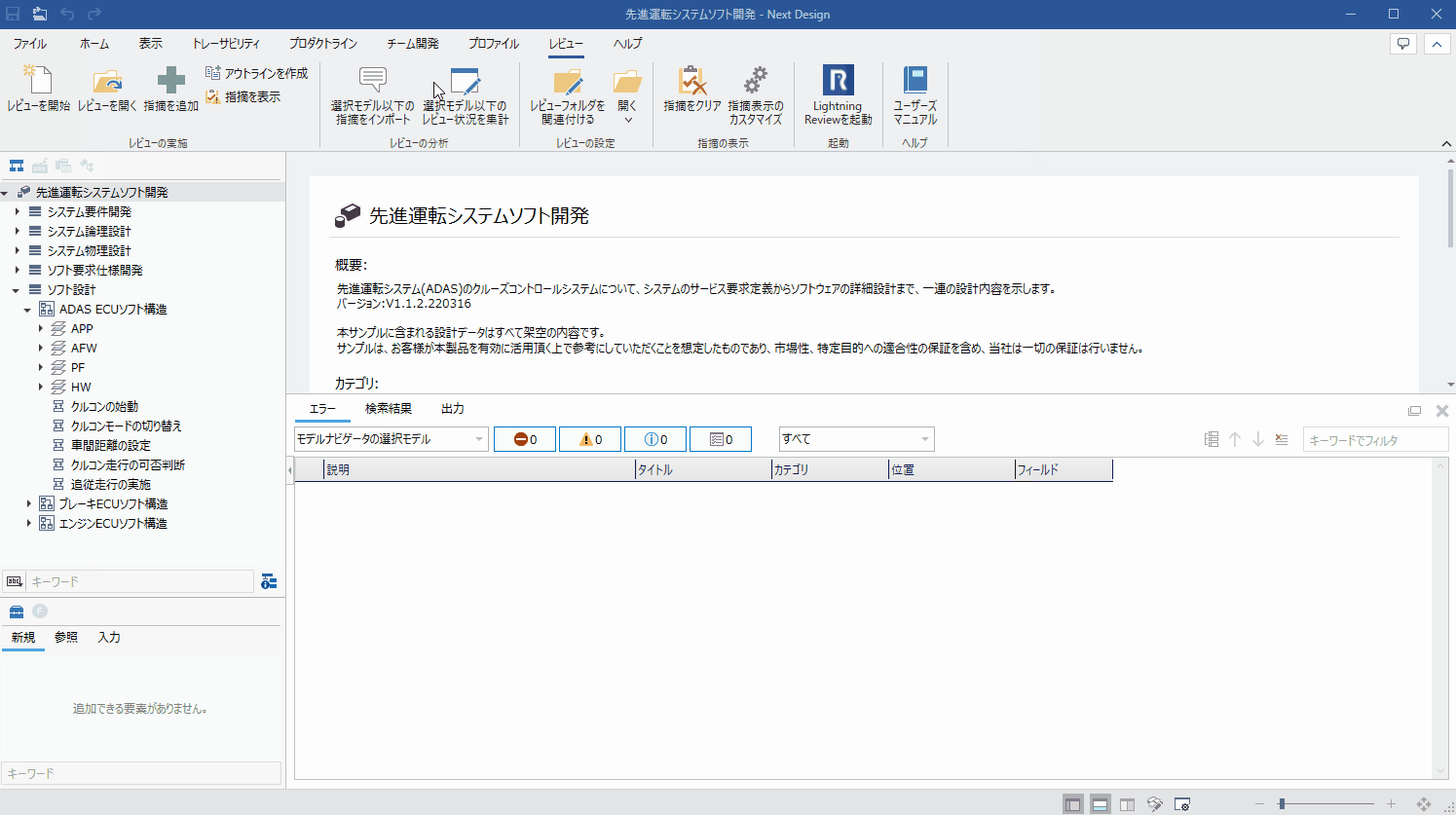Analysis of review points
Overview
You can check the review findings and response status on Next Design.
By creating a review file for each Next Design model, or conducting reviews multiple times, it is often divided into multiple review files.
Even if the review files are divided into multiple review files, you can use this function to see at a glance the contents of the complaints and their response status on Next Design.
Understand the status of review issues
By importing review files created in Lightning Review into Next Design, you can You can understand the status of issues across multiple review files.
The findings of the review files stored in the review folder are aggregated and displayed as errors in Next Design.
By using this function, you can check the details of the points raised and the number of points that you need to correct.
- Click the [Linkage Settings] button in the [Review] menu.
- In the dialog that appears, open the target review folder and click the [Select Folder] button.
- Click [Import issues below selected model].
Issues below the selected model are read and displayed as errors.

- The status of the issue (uncorrected, corrected, confirmed) is also displayed, so you can immediately see if there are any issues that have not been corrected.
- Double-clicking an issue in the error pane opens the corresponding review file in Lightning Review and allows you to check the details of the issue.
Displaying issues

① Clear the indication
Clears the displayed issue.
② Customizing the indication display
You can filter the displayed indications to display items such as Issues that you must correct'' or Issues that have not been confirmed for correction.''
- In the screen below that appears when you click the button, the data selected in the [Category] column display pull-down will be displayed in the category column of the error field.
- Check the conditions you want to filter and click [OK] to filter the displayed issues.

- Can be used "when displaying the current issue" and "when importing issues below the selected model"
- If multiple checkboxes are checked, only those that meet one of the conditions will be displayed.
- "Exclude closed reviews" excludes issues in review files with the status "Close reviews" checked
Aggregate the response status of review issues
You can aggregate the points registered in the review files stored in the review folder specified in advance preparation.
By using this function, you can easily check the response status of review issues even if the review files are different for each model.
- Click the [Linkage Settings] button on the [Review] menu.
- In the dialog that appears, open the target review folder and click the [Select Folder] button.
- Click [Aggregate review status for selected models and below].
The review status of the review files stored in the selected folder is displayed.

Details of aggregation results

- The number of total results will be displayed in ①.
- Details of each icon are shown below. (No corresponds to the number in the diagram)
- Displays one document for each document reviewed by Lightnig Review.
- If a document is related to multiple Next Design models as a document to be reviewed by Lightnig Review, those items will be displayed.
| No | Icon | Content |
|---|---|---|
| ② | Error | Uncorrected issues remain |
| ③ | Warning | Although it has been corrected, there are still some issues whose results have not been confirmed |
| ④ | Information | All indications have been confirmed |
Click each icon to show/hide that item.
Refine display content
You can change the display range of the aggregation results by switching to "below the selected model in the model navigator" or "selected model in the model navigator" in the pull-down menu.
